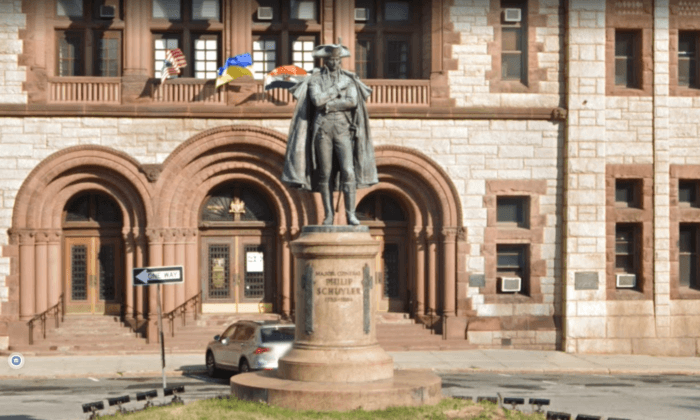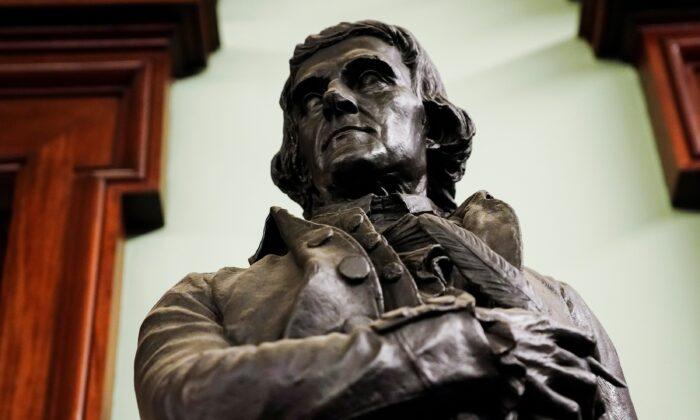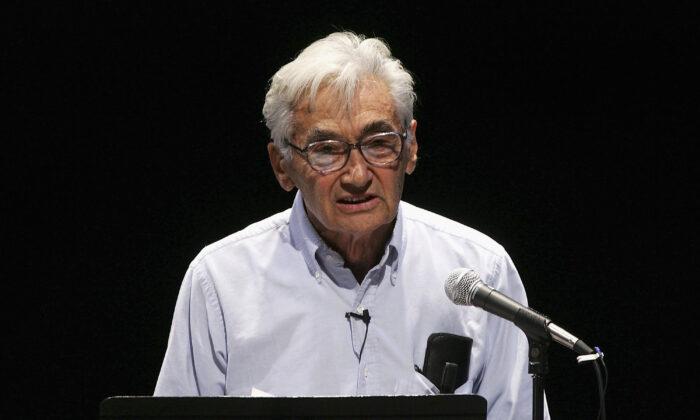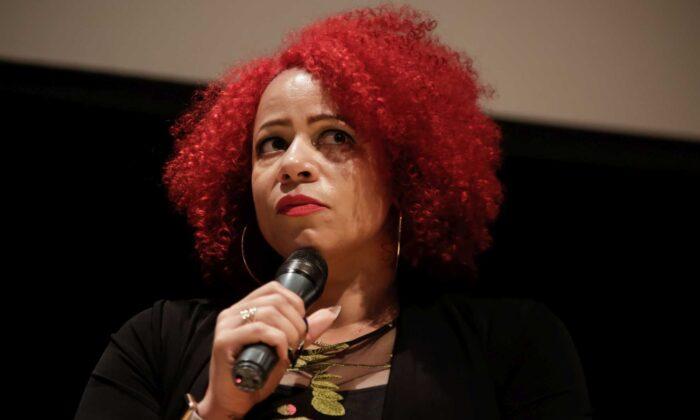Rising Socialism
The rise of Antifa and the surge of popularity of socialism and even communism among millennials (ages 23 to 38) and Generation Z (16 to 22) indicate that another kind of wall—one that had protected young Americans from communist disinformation—has broken down. The favorable opinion of capitalism among those ages 18 to 29, according to Gallup, sank to 45 percent in 2018—from 68 percent in 2010.Simultaneously, the number of millennials reporting favorable feelings toward communism rose by 8 points to 36 percent; those saying they are “extremely likely” to vote for a socialist candidate doubled from 10 percent to 20 percent. And with half of the under-38’s reporting being “somewhat likely” to vote socialist, we now have a majority of younger Americans likely pulling the socialist lever.
Not surprisingly, the positive attitude toward socialism has followed educational experiences. Millennials and Generation Z are “much more likely” than older people to report that communism was presented “favorably” in their schools: 23 percent of Generation Z said that about K-12 and 36 percent said that about college. Similarly, 25 percent of millennials said that about K-12 and 37 percent, about college. For Generation X, it was only 10 percent and 22 percent, respectively; with Baby Boomers, 7 percent and 14 percent, respectively.
Most Americans don’t understand the utter barbarity of communist regimes, with a quarter believing that Nazi Germany was responsible for more deaths than communists, and 72 percent not knowing that communism killed more than 100 million people in the last 100 years. Again, it’s worse among younger generations: Only 19 percent of Generation Z and 17 percent of millennials know the communist death toll, compared to 35 percent of baby boomers and 46 percent of the Silent Generation (aged 74+).
Indeed, history lessons emphasize Nazi horrors (rightly), but communist atrocities are either overlooked or downplayed. The regimes are falsely presented as mutual enemies from the get-go. Few know that the Hitler–Stalin pact started World War II: 21 percent of Generation Z, 24 percent of millennials and Generation X, and 25 percent of Boomers do.
Not surprisingly, Antifa is gaining adherents, especially as Marxist professors scare young people with a false history and claims that we are on the precipice of a fascist takeover by “everyday fascists,” such as supporters of President Donald Trump.
The Fascist Threat
While Van Spronsen was 69 years old, Zinn’s “A People’s History of the United States” is the textbook for millions of school children and college students. The most popular U.S. history book ever, it’s marching toward 3 million in sales since its release in 1980. Plus, there are free lessons produced by the Zinn Education Project, and dozens of spin-off books, movies, graphic adaptations, and excerpts in textbooks.When he was asked to write “A People’s History” in the late 1970s, Zinn was a celebrity radical, known for leading anti-Vietnam War protests and working on behalf of the communist enemy, while teaching at Boston University.

That was the year that Zinn, according to his FBI file and the best analysis of it, was a Party member, teaching a course on Marxism at the Party headquarters in Brooklyn, New York. Zinn’s evil genius was to take the points Foster made in a plodding Soviet style and jazz them up with New Left lingo and seductive rhetoric. But in a side-by-side comparison, the two authors present the same version of the fascist threat.
Foster, for example, writes that in 1933 Germany, “the workers were in a revolutionary mood” but that “the Social-Democrats blocked the revolution, as they had done in Germany in 1918 and in Italy during 1920. They refused to form a united front with the Communists for an all-out fight against Hitler. ...”

In Foster’s telling, the “victory of the Nazis” allowed “the capitalist Jew-haters, Soviet baiters, warmongers, and blatant imperialists” to come “to the fore” in hopes of saving “decaying capitalism.” Not only did Poland, Hungary, Spain, Portugal, Austria, Bulgaria, Greece, Romania, Turkey, Yugoslavia, Finland, Estonia, Latvia, Lithuania, and Japan become fascist or “essentially fascist,” but “the ranks of the capitalists in the other countries of ... the world were filled with fascist conceptions and policies.” Fascism spread to the Americas, with Hitler’s agents “bus[ying] themselves in Canada and the United States,” targeting “the huge blocs of the foreign-born.”
American “native fascist organizations,” also “numerous, strong, and malignant,” included Huey Long, Fr. Charles E. Coughlin, and the Ku Klux Klan. The “big-business elements,” such as the Hearst newspapers; the American Liberty League, launched by the du Ponts; the America First Committee, launched by Robert E. Wood, “head of Montgomery Ward”; Charles E. Lindbergh, “a Morgan stooge”; and the American Legion were all part of the fascist menace.
These “fascists” were “brazenly encouraged and cultivated” by the House Committee on Un-American Activities “under the leadership of the notorious Hamilton Fish, Martin Dies, and J. Parnell Thomas.” Actually, as I point out in “Debunking Howard Zinn,” Rep. Samuel Dickstein in the 1930s used the Dies Committee to “[lead] the congressional attack on domestic fascism”—and with a recklessness that outdid Joseph McCarthy’s.
Promoting the Soviet line, Foster claimed that fascism signified “the breakdown of bourgeois democracy” and the “crisis of capitalism.” FDR’s antifascist actions and speeches were simply efforts to repel “the threat of German and Japanese imperialism against the world interests of United States imperialism.”
The “ruling capitalist classes,” “convinced that capitalism could be saved by war and fascism,” hoped that Hitler was organizing war “toward the east, against the hated socialist republic, which they had been trying to destroy since November 1917.”
The “capitalist governments of the western democracies” allowed Hitler “to reoccupy the Ruhr and to invade Austria,” then sold out “Czechoslovakia at the infamous Munich conference in September 1938.” They permitted “Mussolini to overrun Ethiopia.” They took “no steps to halt Japan’s invasion of China” and refused “to sell munitions to Republican Spain, while the armies of Hitler and Mussolini cut that democratic government to pieces.”
US Imperialism
Like Foster, Zinn accuses the United States and Allies of interfering in the Bolshevik Revolution and joining “England and France in appeasing Hitler throughout the ‘30s.” Roosevelt allowed “American businesses to send oil to Italy in huge quantities” (no mention of the Soviets selling oil to Italy) and sponsored a neutrality act when “a Fascist rebellion took place in Spain in 1935 against the elected socialist-liberal government.”Zinn charges, “It was not Hitler’s attacks on the Jews that brought the United States into World War II, any more than the enslavement of 4 million blacks brought Civil War in 1861. Italy’s attack on Ethiopia, Hitler’s invasion of Austria, his takeover of Czechoslovakia, his attack on Poland [silence from Zinn on Russia’s attack on Poland]—none of those events caused the United States to enter the war. ... What brought the United States fully into the war was ... not humane concern for Japan’s bombing of civilians ... at Nanking. ... It was the Japanese attack on a link in the American Pacific Empire [Pearl Harbor] that did it.”
Zinn adds a rhetorical flourish to the false information with multiple leading questions and suggestive descriptions. Was U.S. policy “simply poor judgment, an unfortunate error? Or was it the logical policy of a government whose main interest was not stopping Fascism but advancing imperial interests of the United States?”
Like all American wars, World War II was “waged by a government whose chief beneficiary—despite volumes of reforms—was a wealthy elite” who were “convinced that capitalism could be saved by war and fascism.” (See Foster’s “ruling capitalist classes.”) For Zinn, the “alliance between big business and the government” went “back to the very first proposals of Alexander Hamilton to Congress after the Revolutionary War.” Foster’s take on the American founding is that it reeked of hypocrisy and was supported by “bourgeois self-seekers.”
At the end of World War II, the Nazi regime may have been defeated, but Zinn asks, “what about fascism—as idea, as reality?” (Just as Foster presents capitalist countries “filled with fascist conceptions.”) Zinn asks, “Were its essential elements—militarism, racism, imperialism—now gone? Or were they absorbed into the already poisoned bones of the victors?”
The answer is implied: “The war not only put the United States in a position to dominate much of the world; it created conditions for effective control at home.” In persecuting citizens accused of being communists, the U.S. government stymied reform. In other words, you don’t need to have Storm Troopers with swastikas on the street.
The postwar period for Foster, too, means that “Wall Street imperialists” in the “anti-Communist crusade” were using U.S. “agents” to bring Nazis back “into positions of economic and political power” in Germany, Spain, France, and Italy, as well as in Asia and Latin America.
Of course, Foster is presenting American efforts to prevent communist takeovers as interventionist support of fascism. According to him, American “big capitalists” also made “their bid for world mastery” by establishing “ruthless fascist policies,” such as “the Taft-Hartley Labor Act, the loyalty tests for government and industrial employees, the disgraceful actions of the House Committee on Un-American Activities, the growth of anti-Negro, anti-Jewish movements, the recently adopted McCarran-Mundt-Nixon police state thought-control law to outlaw the Communist Party and other progressive groups and the railroading of communist leaders to prison. ...” Foster calls the FBI a “huge national secret police.”
Zinn similarly claims that under the McCarran Act “concentration camps” were set up to imprison political dissidents like himself. Actually, the camps, intended to detain “potential saboteurs and spies” in the event of war with the Soviet Union, were never set up.
To present the FBI as a “secret police,” Zinn claims that the FBI needlessly hunted down civil rights activists (the Black Panthers) and insinuates that the FBI killed Vietnam War protester Mary Moylan when, in fact, newspapers reported her surrender in 1979, after which she served only one year in prison and then worked as a nurse.
Foster, like Zinn, claims that postwar American fascism takes on a “new garb” that makes the “plague all the more insidious and dangerous.” The “new style fascism ... pretends to be the great defender of democracy,” translating “Hitler’s crude herrenvolk principle into subtle suggestions of Anglo-American supremacy.”
Influence on Children
Such claims are particularly alarming when they come in the book used in all public eighth-grade classes in Portland, Oregon, “A Young People’s History of the United States.” Its Amazon status as a “best seller” indicates its use in many school districts. In it, middle school students read that Germany became a “war machine,” as did the United States.Zinn asks the young reader to question what he has read in “schoolbooks” and presents his own book as blazing new ground, exposing suppressed truth. He points out that “Hitler’s attacks on the Jews did not bring the United States into the war. Neither did Germany’s invasions of other countries [or of Japan’s of China], although President Franklin D. Roosevelt sent American aid to Britain.”
Three questions in a row are asked about American “goals.” Was the fight “for humanitarian reasons or for power and profit?” Or was it “to end the control of some nations by others—or to make sure that the controlling nations were friends of the United States?”
“Noble statements” didn’t match private conversations. “German bombings were very small compared with British and American bombings of German cities,” Zinn writes, repeating David Irving’s exaggerated statistics. As battles were being fought, American diplomats and businessmen were working hard “to make sure that when the war ended, American economic power would be second to none in the world.”
Hitler persecuted the Jews, but Roosevelt “failed to take steps to save some of those doomed lives.” Segregation reigned in the armed forces—down to the blood banks. The U.S. “came close to the brutal, racist oppression that it was supposed to be fighting against” in “anti-Japanese feeling,” evidenced in their remote “camps” with “prison conditions.”
Instead of simply “allowing Japan to keep its emperor,” the U.S. dropped atomic bombs on Japan. The reason is insinuated through questions: “Was it because too much money and work had gone into the atomic bomb not to use it? Or was it because the United States wanted to end the war before the Soviet Union could enter the fight against Japan. ...?”
Zinn leaves these questions hanging. The statement that at least the war “was over,” is undercut by the question that follows, “Or was it?”
In the chapter about the Cold War, President Harry Truman is accused of building “a mood of crisis” by presenting the Soviet Union and communism as “immediate threats.” In order to stoke fear, “any communism-related revolutionary movement in Europe or Asia was made to look as if the Soviets were taking over more of the world.” In actuality, the “revolutionary movements flar[ing] up in Asia and Africa” were simply outcomes of “colonial peoples demand[ing] independence from European powers.” In North Korea, there was “a socialist dictatorship,” and in South Korea, “a conservative dictatorship.”
Echoing Foster, Zinn accuses the “established powers of government and business,” in order to “make capitalism more secure,” of going on a “hunt for Reds.” Concentration camps were “set up, ready for use” to imprison “suspected Communists” [the champions of the oppressed] without trial, and Party leaders were jailed.
The case against Julius and Ethel Rosenberg was “weak,” but they were still executed as spies. Students are told, “Later investigations proved that the case was deeply flawed.” Actually, Ron Radosh and Joyce Milton, after conducting exhaustive research that included poring over hundreds of thousands of government documents, demonstrated their guilt in their book, “The Rosenberg File,” in 1983. In 2008, Rosenberg codefendant Morton Sobell admitted that he and Julius Rosenberg had been spies.
Pity the poor “tween” subjected to Zinn’s textbook that presents U.S. history as a Sisyphean litany of uprisings by the oppressed who are put down repeatedly by the ruling capitalist class.
It’s exactly what Foster and Zinn wanted.





